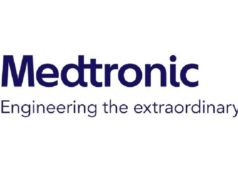
A multi-year clinical trial at the University of Texas Medical Branch (UTMB; Galveston, USA) and Medical University of South Carolina (MUSC; Charleston, USA) will examine the use of a wearable device designed to stimulate nerves near the ear and change signals in the brain as a treatment for chronic pain and opioid tapering.
The trial—known as tANdem—is being funded by an US$8.8 million grant from the National Institutes of Health (NIH) National Institute of Neurological Disorders and Stroke (NINDS), and is intended to provide an understanding of the mechanistic, neurophysiological and antinociceptive effects of transcutaneous auricular neurostimulation (tAN), which has been shown to reduce pain and the symptoms of withdrawal.
“The opioid crisis has spawned untold deaths and chronic disabilities with a major impact on global healthcare,” said Kathryn Cunningham, co-investigator for tANdem and director of UTMB’s Center for Addiction Research. “Our collaborative project will determine the efficacy of tAN to ease tapering of real-world patients from opioid management of chronic pain with reduced withdrawal symptoms. Importantly, neurostimulation therapy will provide a much-needed and innovative treatment option over existing opioid analgesics with high risk for misuse, opioid use disorder, and overdose.”
Neurostimulation devices targeting the cranial nerves have long been used for pain control. In particular, vagus nerve stimulation (VNS) and trigeminal nerve stimulation (TNS) have demonstrated success as an analgesic in acute pain, post-surgical pain, and chronic pain disorders. Wearable tAN therapy, which combines VNS and TNS, has the potential to improve pain therapy significantly by providing a safe, effective and convenient means to facilitate both acute and long-term pain relief without the risks associated with opioids or other pain-relieving medications—or the need for implantable devices used by many current neuromodulation treatments.
That is according to a recent press release from Spark Biomedical, a company that has developed what it claims is the first US Food and Drug Administration (FDA)-cleared wearable, non-invasive tAN device for the treatment of opioid withdrawal. Usage of the company’s Sparrow therapy system for pain management will be investigated in this multicentre trial—described by Spark as a pioneering, collaborative effort bringing together experts in pain, addiction, neurostimulation and neuroimaging.
“Over the last 15 years of studying the development of opioid analgesia tolerance, I have found a higher degree of tolerance with high-dose opioids in animal models and have witnessed similar opioid tolerance and treatment dissatisfaction with high-dose opioids in my patients,” said co-principal investigator Denise Wilkes, a professor in the Department of Anesthesiology and Pain Medicine at UTMB. My team and I have developed and published strategies to help to wean patients off high-dose opioids, and found huge changes in patients’ lives with dose reduction. We are interested in the management and treatment for a condition of trigeminal nerve derangement and trigeminal neuralgia, and how this affects both emotional stability and chronic pain.”
Co-principal investigator Bashar Badran, a neuroscientist and director of the MUSC Neuro-X Lab, added: “Accumulating data from our lab and others suggest that auricular vagal and trigeminal stimulation modalities activate the central and peripheral nervous systems. We live in a moment in history where wearable technologies have the potential to impact how we treat psychiatric and neurological disorders substantially. Opioid withdrawal and pain patients need better treatment options. Ultimately, non-invasive wearable brain stimulation may emerge as a promising non-pharmacological therapy, if we understand and optimise how it works.”
The tANdem trial began in late 2022 and will run through to the fall of 2027, according to Spark’s press release.













